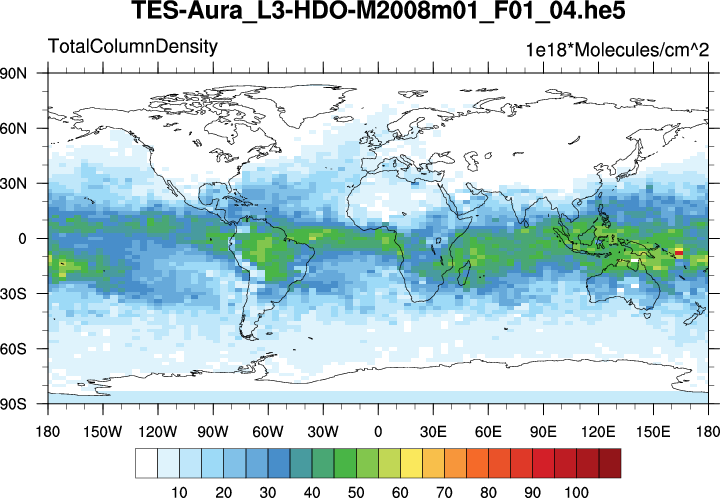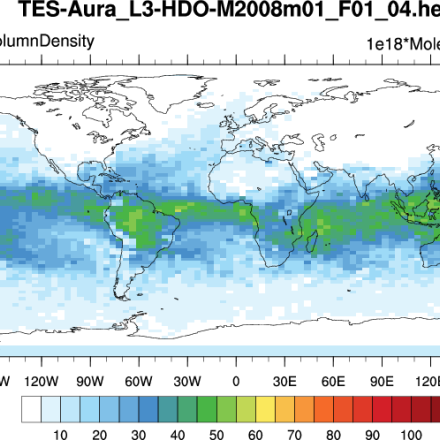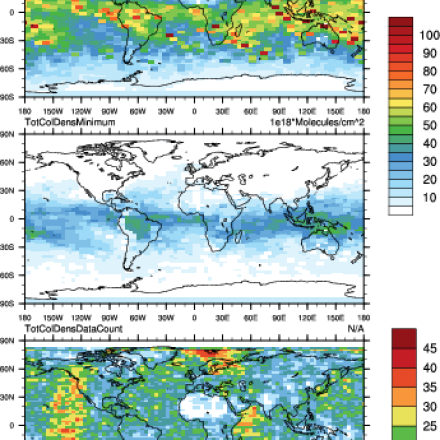| Variable(s) |
δD |
δD |
dD |
δD |
δD |
δD |
δD |
| Primary Input Data |
shortwave infrared spectrometer on ENVISAT, total column |
thermal infrared spectrometer on Aura, sensitive to mid-troposphere |
thermal infrared spectrometer on Aura, sensitive to mid-troposphere |
limb infrared occultation sounder, sensitive in upper troposphere |
limb infrared sounder on ENVISAT, sensitive in upper troposphere |
shortwave infrared spectrometer, total column |
thermal infrared spectrometer, tropospheric profiles (3 independent levels) |
| Spatial Coverage |
Global |
Global |
Global |
Global, but sparse |
Global |
Global |
Global |
|
Spatial Resolution (lat x lon x vertical)
|
120x20 km, total column
|
5.3x8.5 km, 600hPA |
5.3x8.5 km, 3 independent tropospheric levels |
limb measurement, down to 500 hPA |
limb measurement, down to 400 hPA |
? |
|
| missing data present? |
yes |
yes |
yes |
yes |
yes |
yes |
yes |
| Start of record |
2003 |
2004 |
2004 |
2003 |
Sept., 2002 |
2009? |
? |
| End of record |
2005 |
2011 |
211 |
2008 |
March, 2004 (might be longer) |
ongoing? |
? |
| Timestep (raw) |
1x per day |
2x per day, 2am & 2pm local |
|
sunset and sunrise |
10a & 10p local time |
? |
|
| Timestep (processed) |
as measured |
as measured |
|
as measured |
as measured |
? |
|
| Lead Institution |
European Space Agency (ESA) |
NASA |
NASA |
Canadian Space Agency |
ESA |
Japan Aerospace Exploration Agency (JAXA) |
ESA |
| Use restrictions |
contact PI |
public |
contact PI |
contact PI |
contact PI |
info forthcoming |
contact PIs(note 2 main groups) |
| Data download location 1 |
contact PI |
NASA |
available soon - contact PI |
contact PI |
contact PI |
contact PI |
contact PIs |
| Data download location 2 |
|
|
|
|
|
|
|
| DOI (if applicable) |
|
|
|
|
|
|
|
| Data format(s) available |
ascii |
HDF |
netCDF |
ascii |
ascii |
? |
? |
| Are the data updated? |
contact PI |
yes |
contact PI |
contact PI |
contact PI |
contact PI |
contact PI |
|
This table last updated byInformed Guide
|
|
|
TES profile info is preliminary |
|
|
GOSAT info is preliminary |
IASI info is preliminary, and the 2 groups may produce different versions |


